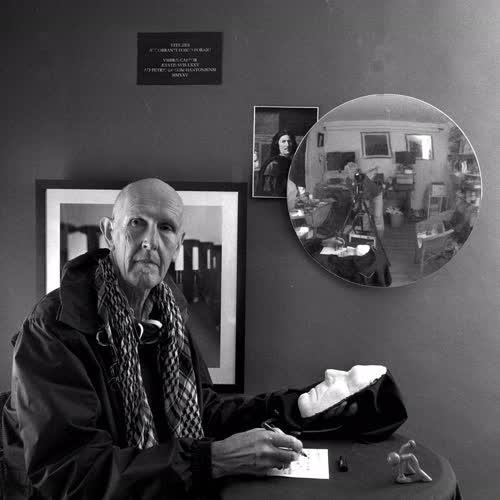
performance to camera, September 2025

This series, Self-portrait, after Poussin explores how we see ourselves over time. The plaster mask is a self-portrait made years ago: it represents the past self, fixed and unchanging. The round glass lens stands for photography and the present moment, always shifting with light. The mirror shows that identity is never just individual but always in relation to others.
In the 1649 painting, Poussin included statuary and a ring referencing Stoic philosophy. Stoicism taught that life is shaped by time, change, and the need to accept what is beyond our control. Poussin used these icons to show himself not only as an artist, but also as someone seeking wisdom in a changing world.
Today these ideas still feel relevant. The plaster mask recalls memory and permanence, but the lens and mirror suggest the constant flux of the present and our ties to others. Like the Stoics, the project reflects on how we live with change and find steadiness in self-understanding. Paul Ricoeur’s writings on identity deepen this reflection: we are at once the same person over time and always becoming someone new.